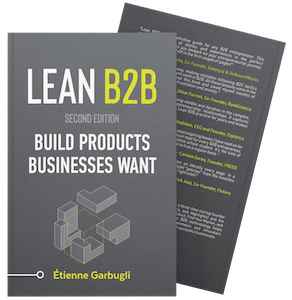“It’s really interesting to go in and say, “Okay, So what do you do today? What’s your process? Literally, show me what you do”. And you kind of walk through that, and then you take some notes and then okay show me again, and go through that with them. You live a day in the life of your customers.” – Dan DeAlmeida, LabVoice Director of Product Management
Contextual inquiries are a combination of interviews and observations on-site or in context. They can help you discover nascent behaviors and understand Jobs at a deeper level.
Since a lot of the best—and most defensible—opportunities are often difficult to get to from outside organizations, being on-site and looking at what people are doing with a fresh pair of eyes can often point to neglected opportunities. You’ll notice the workarounds people use to get the Job done, and you might discover things that prospects don’t even know about themselves.
As Douglas W. Hubbard says: “If you look at how people spend their time and how they spend their money, you can infer quite a lot about their real preferences.”
Recruiting for Contextual Inquiries
The first challenge you’ll face if you intend to learn through contextual inquiries will be recruiting prospects.
If you’re targeting businesses—unless you can do research in a public setting—there will always be a fear that the information gets used competitively. For that reason, it’s usually best to ask for permission before starting your research.
If you align your research around a Job or problem businesses care about, you should have a better chance of convincing them to open their doors.
Other ways to get businesses to open their doors include:
- Leveraging existing relationships: You’ll have an easier time getting in the building if you’ve worked with the team before, or if a member of the management team is willing to vouch for you.
- Building off consulting engagements: If you have the trust of the organization, you can suggest working on site to better understand how to improve your service offering, and to start learning about other opportunities.
- Agreeing on a pilot project: You can set up a project with the organization, writing in requirements for on-site research. The shared desire to create meaningful innovation will motivate them to open their doors to observations.
What to Look Out For During Contextual Inquiries
Once an agreement has been reached, focus your observations on:
- Time-consuming tasks: Why are they time-consuming? Why do those tasks matter? What are people really trying to achieve? How can the tasks be broken down? Are all steps necessary? Are there dependencies?
- Products used: What products get used? In what sequence? What triggers usage? Why did they choose the products that they’re using? Are there visible limitations or frustrations?
- Workarounds: Do they use hacks? Post-it notes? Checklists? Did the prospects come up with solutions to improve their efficiency? It’s a good idea to ask prospects why they created the specific workarounds they use, focusing on the problems that led them to creating those workarounds.
- Strapped-together solutions: Are there solutions they built or put together? Did they build something using Excel or a combination of no-code tools perhaps? Are there multi-tool solutions you could replace?
- Alternatives considered: Have they looked for alternate solutions? Are they not aware of the alternatives? Why can’t they find an off-the-shelf solution to solve their need?
Ask open-ended questions and explore. Getting many observations across days and prospects will help you understand the real processes and struggling moments.
Analyzing Data
Typically, the more people are affected by problems, or the more influential the people struggling are, the more likely it is that the organization will want to address the issues.
Look for patterns across roles and goals. Map out your discoveries and keep exploring.
Depending on the frequency of the problem, Job, or goals you’re exploring, contextual inquiries can be very time-consuming. They can also trigger the Hawthorne (or observer) effect where, consciously or not, prospects will start behaving differently because they are being watched.
Regardless of these issues, I would argue that when you’re making a critical decision—like deciding what to work on—spending a lot of time on understanding the context and the opportunities is not time wasted.
Keep exploring and find the best opportunity to address.
More on Contextual Inquiries
- 16 Tips for Better Customer Development Interviews in B2B
- How to Make the Most Out of Customer Interviews in B2B
- How to Create a Customer Advisory Board to Learn How to Improve Your Product Fast
Download the First 4 Chapters Free
Learn the major differences between B2B and B2C customer development, how to think about business ideas, and how to assess a venture’s risk in this 70-page sampler.
Working on a B2B Startup?
Learn B2B customer development with our free email course:


